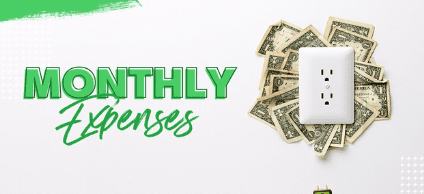There’s always a first time, and there is always time to begin creating a budget. You will better understand your finances and cope with your financial worry by making a budget that you’ll follow.
To make the process more routine, you must modify your budgeting strategy. This professional advice will have you managing your finances like an expert in no time.
Your budget must be dependent on your income.
The budget that will work best for you should be considered in addition to your budget’s general framework. It is advised that your income serves as the foundation of your budget.
Make a weekly budget when you are paid; otherwise, a monthly wage would require a monthly budget. Feel free to experiment with various budgeting formats and methods until you find the one that best suits your style of living and financial objectives.
One of the methods to save money is getting things on rent. You can get a phone for rent or a laptop for rent in Delhi for affordable prices.
Observe how often you spend money as well. If you use your credit card frequently, you should create a weekly budget because it will allow you to keep a closer watch on your everyday purchases.
To track your expenditure and maintain it in check, experts advise opening a second bank account. Depending on your budget, load some money onto a debit card once a week or once a month. Then, monitor how much you spend—or, preferably, save.
Keep it simple
When making a budget for the initial time, keep it as straightforward as possible. It won’t feel as daunting and will be simpler for you to sustain this way. Stay within your budget.
Simply listing your expenses, including recent purchases (plus any annual or quarterly fees), and deducting them from your income is what experts advise.
You may track their spending without requiring you to keep track of many areas by using a straightforward structure such as the 50-30-20 budget.
Divide your spending into three categories: essentials (use 50%), wants (use 30%), plus savings (20%) or debt repayment (20%). The percentages can constantly be adjusted to fit your lifestyle. It would help if you made your budget function for you. You may install a budget app for an even more straightforward approach to monitoring your spending and budget.
Set financial objectives and design a budget around them
Set some financial objectives, and then use your budget to help you achieve them. A budget can be a compass for people who wish to hold themselves responsible while working toward a particular financial objective.
Use a variable payment method to spread out the price of purchases from merchants without incurring late fees if you want to remain on track with the budgeting objectives.
Be bold and experiment with various budgets once you find the one which works for you (or a mix of methods). Your spending plan only needs to be appropriate for you; it can be something other than flawless.
Only engage in activities where you realize you’ll spend money.
It’s time to follow your budget now that you’ve created one. Paying someone to perform things you could do yourself is among the best ways to stay within your budget.
Another suggestion is to designate a day or a few days per month when you do not spend any money. Prepare meals at home or engage in free activities instead of going out.
Conclusion
A realistic view of your cash flow in and out will assist you in discovering any unnecessary expenses and detecting your excellent and negative spending patterns. This financial knowledge will help you be ready for unforeseen costs or setbacks.
Every few weeks, review your spending to evaluate your progress and whether your budget needs to be adjusted. Set reasonable spending objectives for yourself; being overly restrictive can have the reverse effect and encourage impulsive purchases.



































